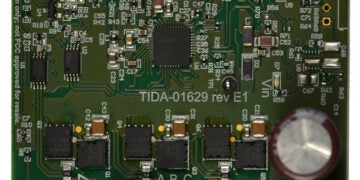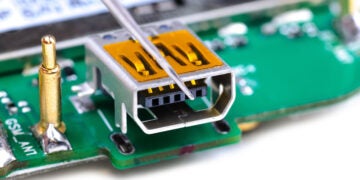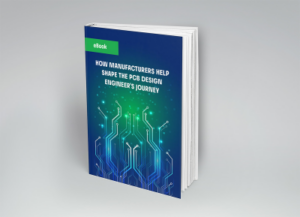
Workers are inventorying an electronic parts database
Managing an electronic parts database effectively can make or break your PCB design timeline and project success. Engineers waste countless hours searching for components, verifying specifications, and dealing with outdated part information that leads to costly design revisions. The solution lies in leveraging comprehensive CAD library management software that transforms your electronic parts database from a static repository into a dynamic design accelerator.
Electronic Parts Database Attributes
All PCB designers rely on an electronic parts database to search for and select components. In many cases, engineers depend on a third-party online search tool as their primary resource to research components. Although these tools can be very helpful, they are developed for generic use, as opposed to other options that are built around your specific project needs, as shown below.
| Electronic Parts Database Comparison | |||
| Attributes | Basic Database | Professional CAD Library | Ultra Librarian Advantage |
| Part Count | Typically limited to previously used components | A large repository of components, typically from well-known manufacturers | Access to the largest online library of manufacturer-vetted CAD models and design information |
| CAD Model Accuracy | User-generated | Vendor-verified | Engineer-validated models |
| Supply Chain Data | Static snapshots | Weekly updates | Real-time pricing & availability |
| Design Integration | Manual import | Direct CAD integration | Seamless workflow integration |
| Compliance Tracking | Basic categorization | Industry standards | Full regulatory compliance |
| Cost Visibility | Part price only | Basic cost analysis | Complete BOM cost optimization |
As the table above illustrates, functionality and capabilities vary depending on the type of electronic parts database you use in your design workflow. However, with the right features, your database can help you optimize your design process.
Essential Features of Professional Electronic Parts Databases
Modern PCB design demands more than basic component catalogs for accuracy in component selection. Professional-grade electronic parts databases can help by integrating seamlessly with your PCB design software and EDA tool environment to give designers the resources they need. A CAD environment while providing real-time intelligence that guides design decisions.
Essential Electronic Parts Database Capabilities:
Schematic symbols, footprints, and 3D models should be accurate, vetted to coincide with manufacturer data, and engineer-validated.
Datasheet and design information should be up to date and verifiable.
It is critical to have real-time supply chain data, such as component availability, turnaround times, costs, etc.
The database should allow you to manage the lifecycle of the components that you use. You should be aware of planned discontinuations and when alternative components are available.
Your database should include any special or specific information about your component that needs to be included during design to ensure your CM has all the necessary information for high-quality installation.
Your database should also include any standards or compliance information about your components. |
Failing to ensure your parts database meets these qualifications can be costly. PCB designers lose an average of 12-15 hours per project dealing with parts database issues, according to recent industry surveys. These inefficiencies compound across your design team, creating bottlenecks that delay product launches and increase development costs. Common database-related delays include:
Electronic Parts Database-related delays
- Searching for suitable components across multiple vendor sites
- Verifying part specifications and availability manually
- Creating or modifying CAD footprints for new components
- Discovering obsolete parts during the design review phase
- Reworking designs due to inaccurate component data
The financial impact extends beyond labor costs. Design teams using inadequate parts databases report substantially higher component costs due to poor visibility into pricing alternatives and supply chain constraints. This ultimately lowers profitability and causes delays in getting your board design to market on schedule.
The Impact of Your Parts Database on PCB Designs
The quality of your electronic parts database directly influences every aspect of PCB design success, from initial concept through production release. Specific benefits include:
Advantages of a Professional Electronic Parts Database✅ Design Quality Improvements: Accurate component data and verified CAD models reduce design errors by up to 60%. Engineers spend more time optimizing circuit performance instead of troubleshooting component integration issues. ✅ Cost Optimization Results: Real-time pricing visibility enables component selection that balances performance requirements with cost constraints. Teams report a 12-18% reduction in component costs through better supplier visibility and alternative part identification. ✅ Schedule Reliability: Proactive supply chain monitoring prevents component obsolescence surprises, which can delay projects by months. When component availability is validated throughout the design process, design teams achieve more predictable schedule goals. ✅ Manufacturing Readiness: Professional parts databases include manufacturability guidelines and supplier qualification status, reducing the transition time from design completion to production release. |
Maximizing Your PCB Librarian Tool Investment
A PCB librarian tool becomes truly valuable when it integrates deeply with your design workflow and provides actionable intelligence throughout the development process. Ultra Librarian provides this level of advanced integration with its Virtual Librarian Service (VLS) and UltraBOM. These two electronic parts database services provide all the essentials and more. For example, they provide you with:
VLS + UltraBOM Advantage
|
With these tools, you will be able to realize significant gains in your PCB design workflow. For example:
| Optimization Impact Metrics | ||
| Metric | Before Optimization | After Implementation |
| Component selection time | 45-60 minutes | 8-12 minutes |
| BOM cost variance | 15-25% | 3-8% |
| Design revision cycles | 3-4 iterations | 1-2 iterations |
| Time to market | 12-18 months | 9-14 months |
Your electronic parts database serves as the foundation for efficient PCB design workflows and successful product development. By implementing comprehensive CAD library management software like VLS and UltraBOM, which provides accurate component data, real-time supply chain intelligence, and seamless design integration, your engineering teams can reduce development time, optimize costs, and improve design quality.
If you’re looking for CAD models for common components or important information on optimizing your electronic parts database for efficiency, Ultra Librarian helps by compiling all your sourcing and CAD information in one place.
Building and maintaining an effective component library that is supply chain resilient requires expertise and a substantial time commitment. Working with Ultra Librarian is the most efficient solution. We can build you a customized Virtual Librarian Service that will streamline component selection, ensure parts meet your standards, expedite procurement, and optimize your PCBA development process for innovation. To learn more, schedule a meeting.








